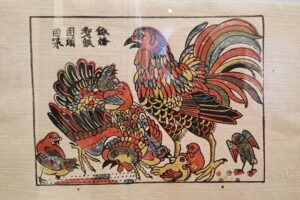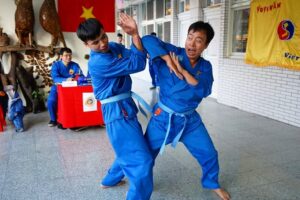Indian tourists have diverse cultural characteristics and different needs in each journey to new lands.
Understanding the needs of each tourist group from India will help you quickly sell tours and run the itineraries smoothly.
We now detail the Indian visitors’ characters when working with this client market.
1. Have a distinctive taste in eating.
Visitors from India have different requirements for meals when traveling. Due to the influence of culture and religion, many Indians have strict diets.
Some groups may require vegan restaurants. Some need restaurants serving Indian-style meals.
In our experience, although we tried to recommend a few Vietnamese restaurants with local food to showcase the local culture, they were ignored.
2. Going in a group is still a priority.
The number of Indian tourists traveling in groups accounts for a large portion of visits to Southeast Asian countries, including Vietnam. Group traveling can reduce transportation costs, room rates, and guide fees, if any.
Small Indian groups of family or friends are still present on the discovery routes.
However, within each subgroup, there are different requirements. For example, some people like to find tattoos in Vietnam, some want to find garment shops in Hoi An, and others want to find bamboo and rattan products.
Meeting different individual needs in a group can be difficult if the tour schedule is too tight. Therefore, the guide plays a huge role in determining success when satisfying these requirements.
Choosing an experienced tour guide and working closely together to help the tour be completed successfully.
3. The sightseeing time of each day can change a lot.
The sudden change and slow habits of Indian tourists in the group may break the estimated time. We often call this “rubber hour,” which is very different when working with guests from other countries, such as Singapore, the USA, Australia, and Europe.
If you schedule an appointment to start a trip at 9:00 am, the group may arrive at 9:30 am or later. I used to wait for a group of guests with a tour schedule at 10:00 am, but it took more than 11:00 am to leave the hotel.
Therefore, operators, guides, and drivers must prepare psychologically for this delay. Please inform the guests beforehand that the delay may affect the tour schedule. Additional time postponement may result in extra costs for waiting services, including vehicles, tour guides, tour operators, and drivers.
4. Change the itinerary schedule.
Visitors from India on journeys lasting longer than one day are more likely to request a schedule change. If you have not met, you are in luck, but we often experience this.
Changing attractions and restaurants’ locations will affect the route. You need to estimate time and price and have a plan to set up the tour program. Sudden changes, sometimes unexpected, will incur costs, and you need to discuss and inform the guests or travel agents in India.
If you work through an agency, you must clearly communicate in advance any limitations on your performance, arising or changes affecting the costs to be covered by the clients. This helps you avoid bitterness or capital loss because of excess costs incurred.
5. Like to eat late.
Dinner is usually eaten at 8:00 pm, but some groups want dinner at 9:00 pm, which may be when some of the people in Vietnam have gone to bed. Lalala! Completing the program for each day can last until 11:00 pm or even midnight.
Indeed, the workers will feel tired, and most of them will be the tour guide and the driver.
Therefore, you—as the operator—must offer a clear surcharge bonus to guides and drivers to encourage them to enjoy their work.
The inappropriate surcharge will make it difficult for you (a tour operator) to operate and arrange personnel for the following tours serving guests from India.
6. Like to buy souvenirs.
Indian guests and Asian tourists want to buy plenty of souvenirs.
They often choose souvenirs that are not high-value. They will be attracted to souvenirs from Vietnam with exciting features and beautiful items for daily life, like scarves.
Many Indian visitors can spend hours shopping, considering it an activity in their journey and experience. Neighborhoods with many souvenir shops, such as Hoi An ancient town and Hanoi Old Quarter, have become their favorite places in Vietnam.
Many Indian tourists like to haggle over the items they want to buy. Therefore, if you are a salesperson, you also need to be patient with them to sell goods.
The tour guide traveling in groups can act as a bridge between tourists and sellers, helping sellers sell goods and assisting Indian customers in buying souvenirs at prices they can happily pay.
The above are our experiences working with tourists from India.
Different groups of these clients have different needs and preferences. The ideas above may not be suitable for the Indian travelers you focus on.
The best way is to ask them or observe closely to understand the psychology of each Indian group when booking a tour or during the trip.
A good tour guide can quickly grasp the psychology of Indian travelers when interacting with them. Thus, arranging a guide knowledgeable about Indian culture is essential to satisfying their needs and making the tour successful.



